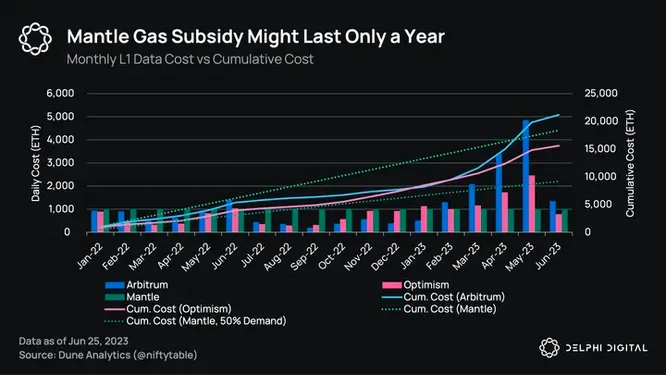Mantle Mainnet is live, and BIT holders can now convert their BIT tokens to MNT tokens.
Here are some useful links:
Ethereum to Mantle Network Bridge
Mantle Network is a modular L2 ORU developed using the Optimism stack. It implements several innovative design elements, resulting in increased scalability and an improved user experience. They provide improvements on the current L2 stack through a modular DA layer, Multi-Party Computation (MPC), and decentralizing their sequencer.

Mantle’s integration of EigenDA into its data availability layer enables increased transaction throughput and lower fees without compromising security. This modular approach to data availability reduces the data posted on the Ethereum mainnet, thereby cutting costs for end users. In fact, recent Mantle testnet results have shown that this modular data availability design can decrease gas fees for L2 users by up to 70%.
MNT Utility:
-
Threshold signature scheme node for its MPC network will require 2M MNT staked to become a node operator.
-
EigenDA for Mantle will utilize a dual-staking model of restaked ETH + MNT.
-
Sequencers will utilize a PoS model.
-
MNT as Gas Fees

To forecast Mantle’s potential gas costs, we’ve used the average gas cost of Arbitrum and Optimism since January 2022. If Mantle can achieve the same level of usage as Arbitrum or Optimism, it will likely use most of the gas subsidy in just over a year. At a 50% demand level, it will spend 9.2k ETH (61% of the budget) for L1 data costs over 1.5 years. During this period, the goal would be for EigenDA to launch, which would significantly reduce L1 data costs and extend the gas subsidy’s lifespan.
In addition, this gas subsidy acts as a pseudo-buyback for Mantle, as they’re paying ETH for gas on L1 and receiving MNT on L2 from gas paid by users. Assuming ETH is priced at $1,900, this represents $28.5M in the pseudo-buyback.
For more, do read our Pro report on Mantle Network.